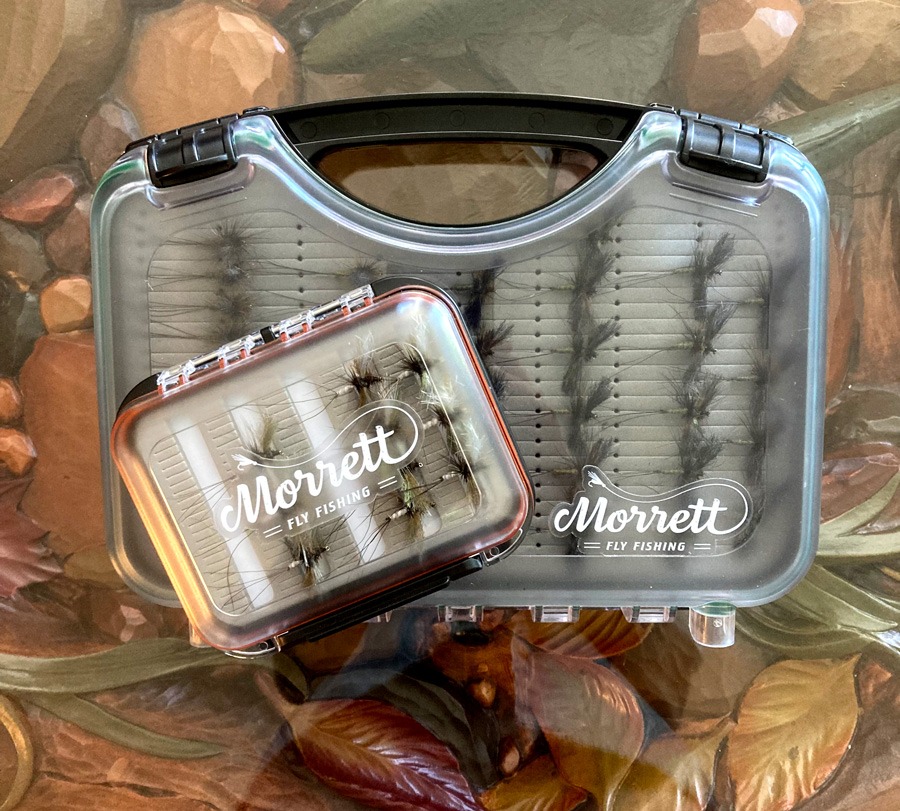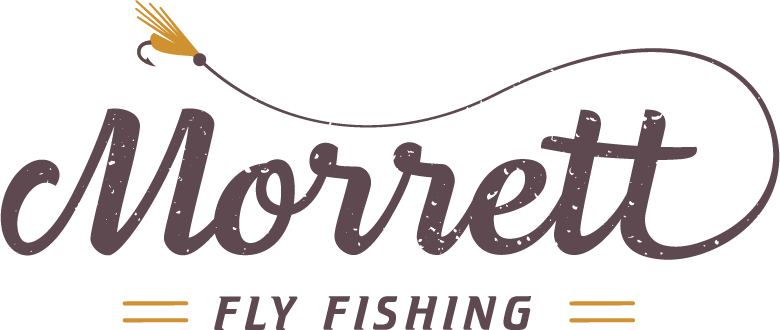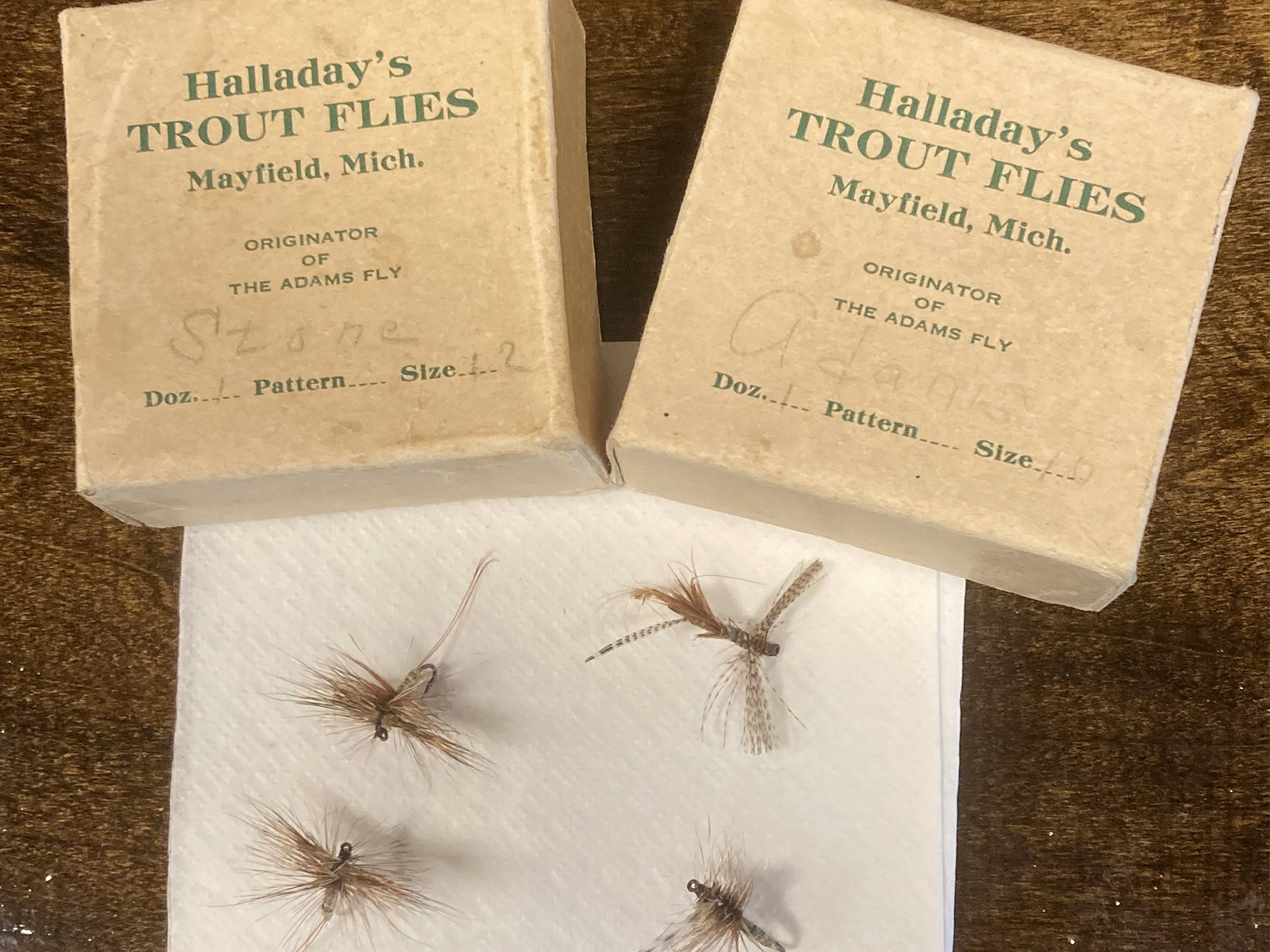Foundations
A quote from the famous English fly fisherman and fly tier, G.E.M. Skues, that was communicated over 125 years ago. “I think, however, it should be the ideal of the sportsman angler to take his trout, where he can do so, by the means of imitations, representations, or suggestions of its natural food presented in the conditions in which the trout is feeding on.”
In the early part of the 1900’s, Theodore Gordon tied his own custom flies by observing nature and the trout’s behavior while feeding. Closer observation provided Gordon with a color palette that would closely match the particular mayfly that was prevalent at that time on the water. Gathering materials such as fur and feathers was undoubtedly an adventure. Gordon discovered and pointed out the incredible color, pattern, and texture similarities that can be found in nature when it comes to birds and bugs. Every fly tied by Gordon was custom, intended to imitate a particular bug or baitfish that he had observed. After keen observation, the hunter gatherer’s instinct showed up and Theodore headed to the forest for materials. I believe he discovered that nothing can imitate nature as well as nature itself.
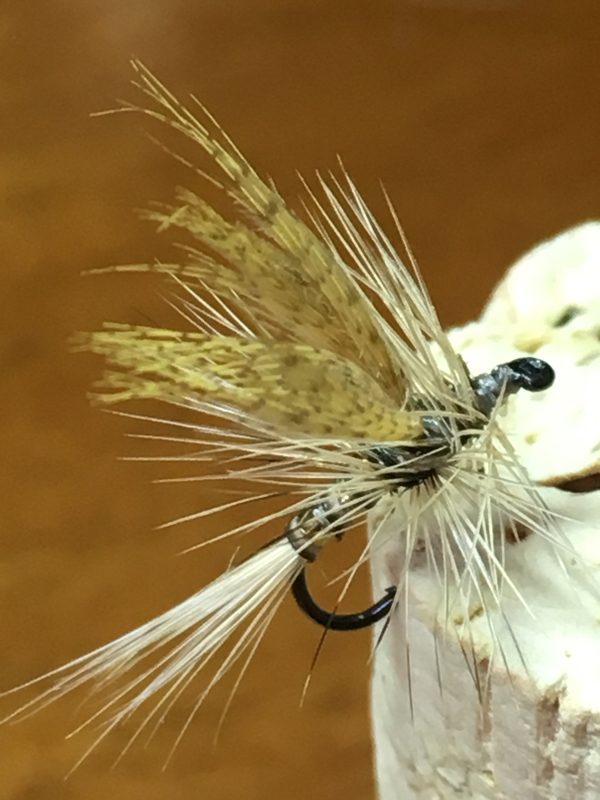
I think Vince Marinaro took the observation of a trout’s feeding behavior to a whole new level in the 1940’s and 1950’s. All the detailed study he and his buddies performed on the Letort Spring Run in Pennsylvania led to tying a custom fly that would match what the trout was seeing and how it was being seen from the trout’s point of view. Although, I have heard from reliable sources, Vince was not known for selling or even sharing his flies, the patterns he created and inspired are all based on imitating the trout’s food source at the vice using fur and feathers.
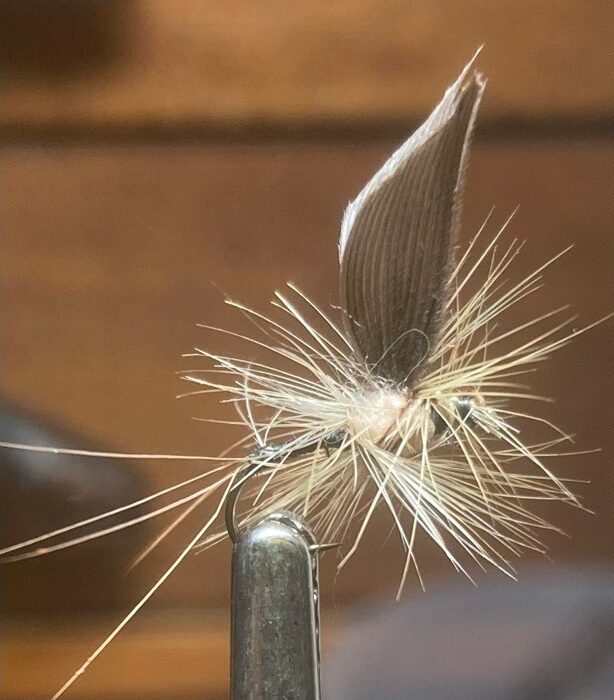
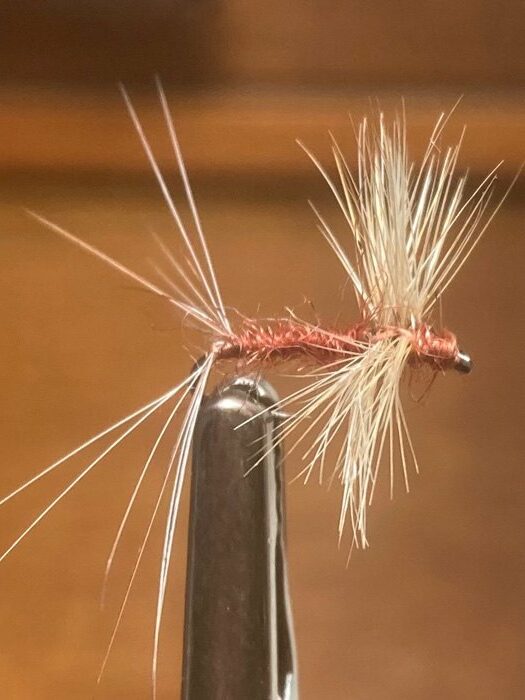
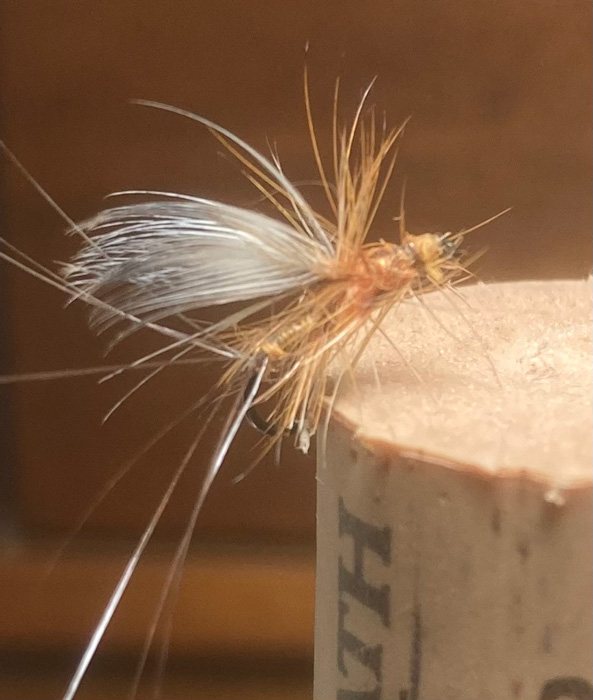
Len Halladay tied flies for customers around the Grayling, Michigan area as far back as 1917. Arguably the most famous custom fly pattern ever created was tied by Halladay for a customer to be used on the Boardman River. The customer came to Halladay with specifics in regards to a hatch that was happening at that time. With input from the client, Charles Adams, Halladay crafted a dry fly that both men thought was a match. The next morning’s fishing report from the evening before was that this fly was a “knock-out”. This was the birth of the Adams Dry Fly created by Len Halladay. This pattern has had countless variations tied since that evening that have fooled trout around the world. I think it is cool that all of this possibly started with a simple, “Hey Len, you think you can tie up something that looks like this?”.
I have found that most avid and successful fly fishermen are keen observers of what’s going on around the river in regards to insect activity. They may not know the name of the bugs they are seeing but they know what they look like. The next step is finding a fly that looks like what is being observed on or around the river. The flies that are commercially tied are representations of many variations of mayflies, caddis flies, terrestrials, etc. that are found around streams throughout the world. These can be found at the local fly shop and are patterns that have worked in the past and continue to perform well. However, there are times when a discriminating or frustrated fly fisherman can not find the perfect fly. He or she knows what they want but can not find the pattern tied commercially. There is no better feeling as a fly fisherman than to fool a trout with a pattern that you tied yourself or you were an integral part of the design process. This is where a custom fly tier has stepped in over the years to help make this happen for the angler. This is the tradition that we hold on to and are passing down to the next generation.
What the custom fly tying process looks like in practical terms can be broken down into stages by sharing details of a recent large order of mayflies that we filled for a Michigan fly fishing adventure. This process is based on the same concept used over the years. I try to apply these steps with every custom fly order I tie, no matter the quantity.
Step One: Investigation & Discovery
Most of the requests for my custom flies come from discriminating fly fishermen looking for something specific that they can not find in the fly bins. This was the case with a recent order from an experienced fly angler from Michigan. This client had all the information necessary to create imitations of what he had in mind for the river he was planning to fish. Expectations of experiencing the annual Green Drake hatch was high. Information necessary to tie a truly custom fly had already been gathered by the fisherman. Important and necessary intel such as what body of water or stream is the destination, of course, is essential. The time of year of the trip needs to be determined to properly forecast what kind of insect activity might be expected. More specifics would include local knowledge and eye witness accounts. Client information from personal experience is invaluable if available. A phone conversation with an avid fly fisherman in regards to what he or she has seen on or around the stream can produce all the information needed to co-create a representation of what is imagined. If detailed information is not available from the client then the investigation begins.
I have gained some experience and local knowledge over the years on many rivers, streams, and spring creeks around the Midwest and other destinations in regards to trout fishing. Many of the trips have started with a quality guide leading the way. I have employed the services of many over the years. Fortunately, I have remained in contact with many of these guys and they continue to be a great source of information in regards to trout fishing in their region of the country. This is the first phone call I make when I need to know what they are seeing, hearing about, or expecting to see on their local waters. The local fly shop or shops located near your destination are another excellent source of information in regards to hatch charts. The fly offering they have in the shop will certainly mirror what is being seen in their backyard. The websites for destination location shops are a great source for viewing quality images of flies available for sale in their inventory. Common sense tells me to pay attention to details in regards to species, sizes, colors, and pattern choices for recommended flies. I have got to think they are stocking patterns that will work on their local streams. I like to purchase some flies from the local fly shop at destinations and thank them for being there.
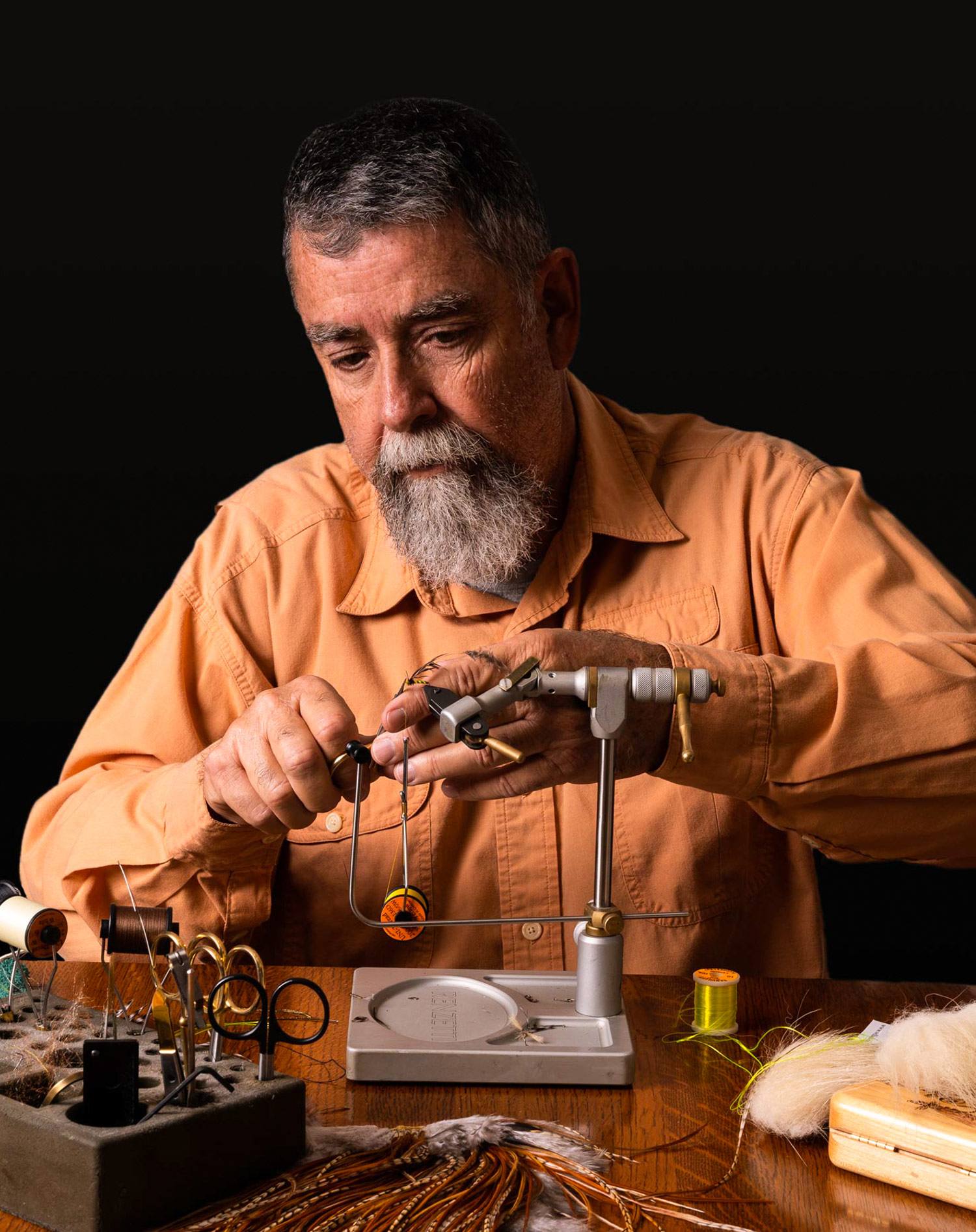
The last bit of information needed concerns what type of presentation the client is planning on making. The choices may include dry fly, nymphing, streamers, etc and the fly pattern or patterns that may perform. I specialize in dry fly patterns, however, I have provided for clients over the years a wide variety of other options.
Step Two: Samples
Back to the Green Drakes in Michigan. As I mentioned earlier, this client had all the information. He had fished this water many times in the past at the same time of the year. The client had experience fishing this hatch with some success using parachute patterns. He explained to me that he could not find the exact color or size he thought would be perfect for his needs. He hoped that we could create exactly what he had imagined. The last phone conversation we had before starting some sample patterns allowed us to take a very close look as to what was happening on the water and in the air during the hatch. I offered up some suggestions in regards to the effectiveness of having some crippled patterns to go along with the parachute order for a different look for the trout. We talked about the spinner fall and the fact that Green Drake spinners are normally an off-white coloration on the abdomen and lighter wings than found on the corresponding dun. The client mentioned that yes, he had seen this white spinner sparingly in the past. It seemed to him that the trout were feeding more heavily on a slightly smaller rusty brown colored spent spinner. We discussed the possibility that a smaller hatch was happening masked by the larger Green Drake bodies flying around everywhere. Sometimes, trout will fool an angler by focusing on a food source that is less prevalent on the water than the main hatch being observed. I appreciate the fact that this client had witnessed this feeding behavior and wanted to be prepared if similar conditions occur this year. Observation and first hand accounts from a fly fisherman can make the sampling process a much more focused and clearer task. The sample patterns that were prepared included a variety of possibilities to choose from along with a pretty wide selection of colorations, styles, textures, materials, and wing possibilities. I think it is really cool when a client does a little combo platter by picking out different aspects of the various samples, combines them, and then creates a very unique and one of a kind fly.
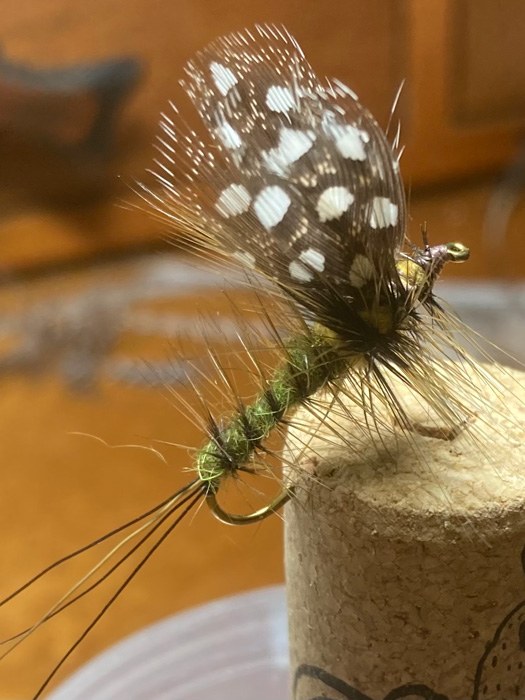
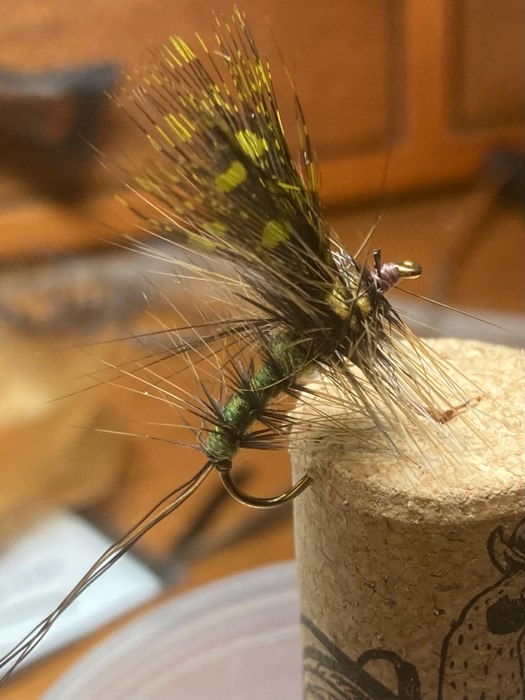
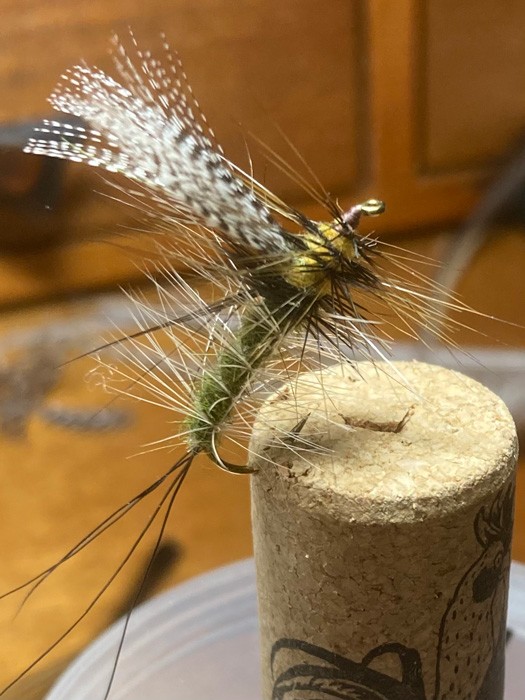
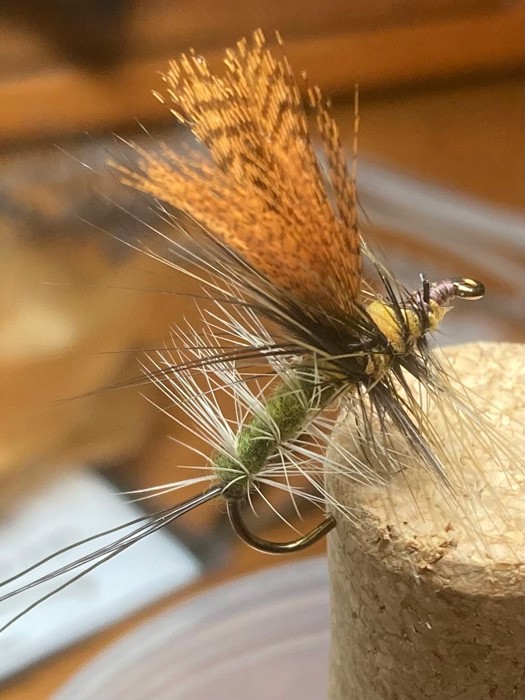
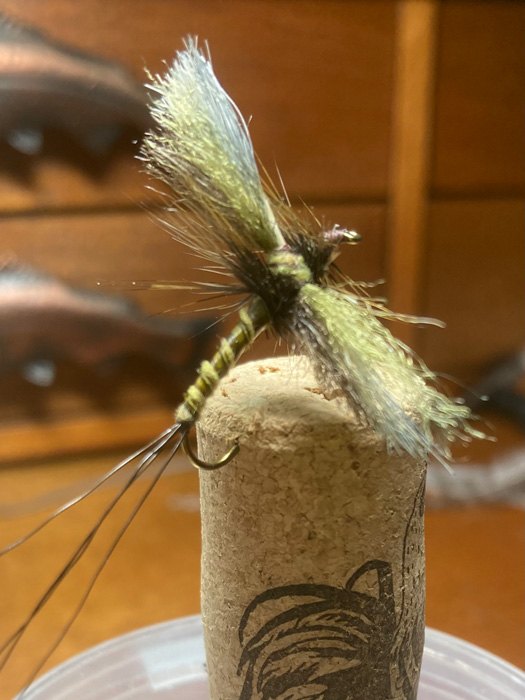
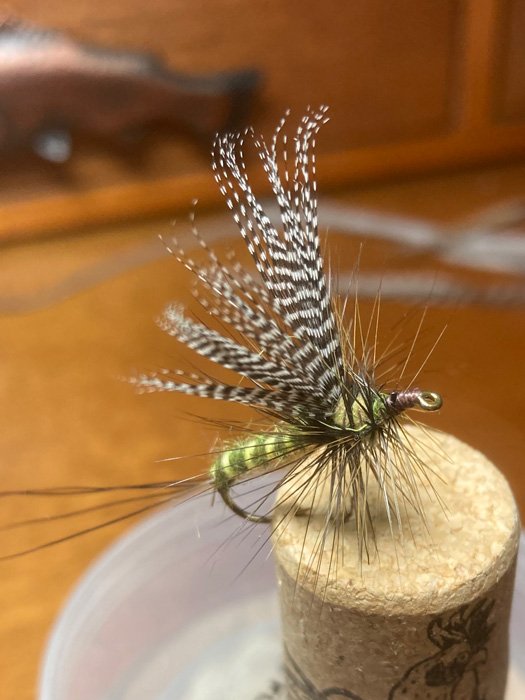

Step Three: Pattern Approval
After careful consideration of sample photos by the client, final samples needed to be tied. My focus was to be on parachutes, cripples, spinners, and rusty spinners. The theme handed down from the client included extra large and dark green, very dark. Four sample patterns were then tied attempting to incorporate all the details discussed and defined. The Michigan Dark Green Drake project was approved for the production of one hundred Green Drake variations.
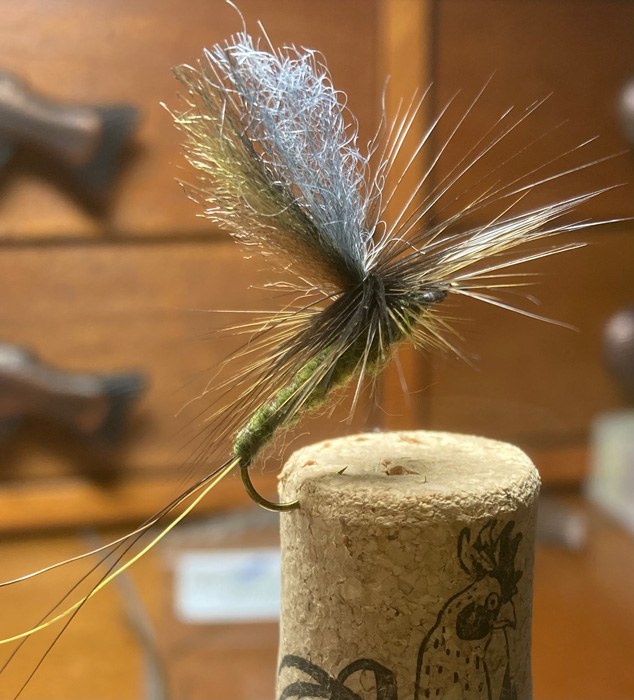
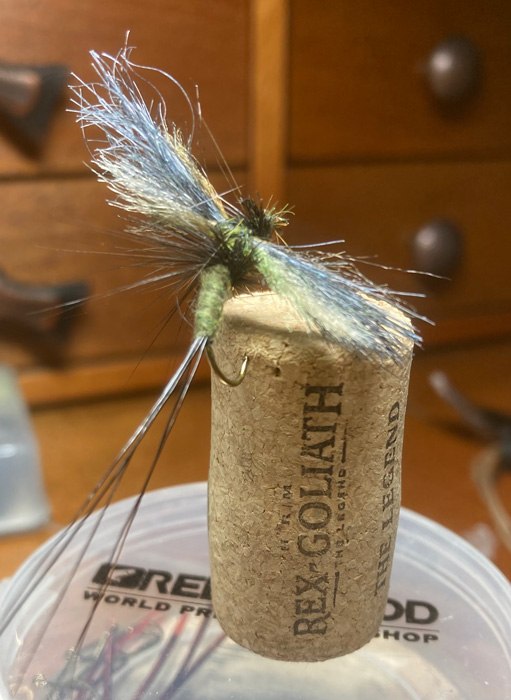
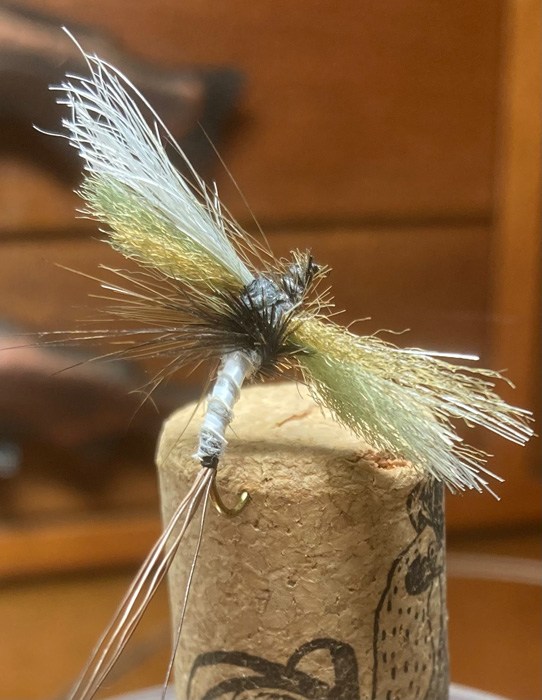
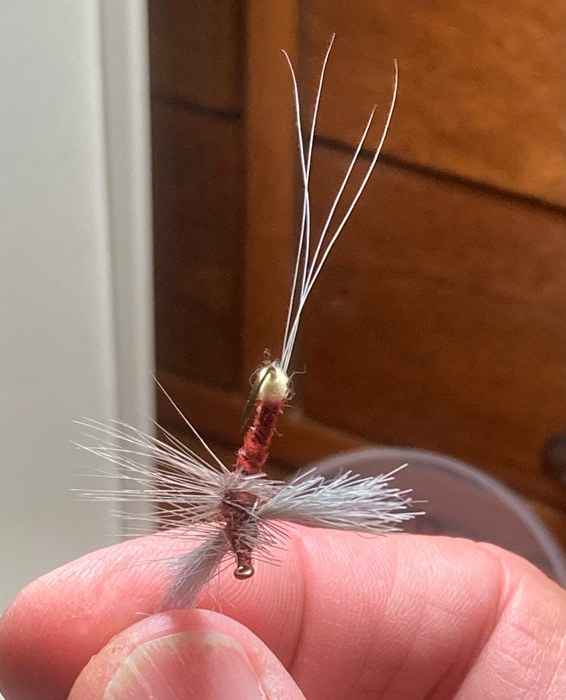
Step Four: Gathering Materials
Before starting the actual tying process, I make sure there are enough materials in my inventory to complete the order with consistent ingredients. If not, a trip to the feather store is in order. You know, the fly shop. I had no idea what immediate impact the need for one hundred extra large dark olive feathers would have on a cape that I have had for some time. My math said that I will need about three hundred moose mane quills for tails. One large package of dubbing in the right color of olive will be needed. Three large packages of different colors of Z-Lon for the parachute posts and wings combined with a pinch of polar bear fur will do nicely. The spinners will require turkey biots for the abdomen coupled with corresponding colors of dubbing to match. Oh yeah, I will probably need some hooks as well. I am fortunate that over the years I have acquired a large inventory of tying materials. The gathering aspect for me is knowing where certain materials are stored in my cedar boxes and locating them. The hunting portion is reserved for the materials I need to go looking for, you know, hunting. This is not as tough of a duty as Theodore Gordon had to endure but it is a similar process. It takes time and also knowing where to look.

Step Five: Vice Time
I estimate that I can tie about four of these particular patterns in one hour. My calculations call for around twenty-five hours of tying time. The client needed this order in about a five week time period. I am old school when I say vice time was scheduled using my old reliable Filson day timer to make sure this order would ship complete and on time. Twenty-five hours of time tying gives one time to think. I think I am glad I love to tie flies because tying flies is not a wealthy man’s profession or pursuit, trust me on this one. Another thought that kept re-occurring during the tying process was how important a little fly can be to the overall success of a fly fishing trip. This thought keeps me focused on each individual fly that I tie. My policy is that when a client receives the order, if there is any problem with an individual fly or the entire order, please send them back. I believe in my fly patterns and I take the trust that a client has placed in me seriously.
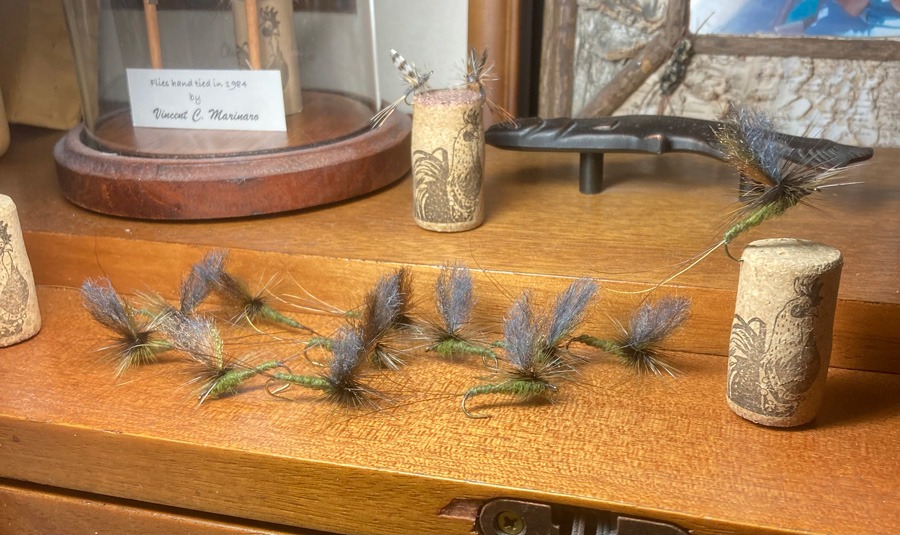
Final Step: Inspection & Delivery
My final inspection happens as the flies are placed individually into their new travel box. They look like little soldiers going off to battle. We check each fly out for any loose ends or missed steps. I take photos of each custom pattern I tie for the records and to ensure I have a pattern for future orders. At this point it is time to say good-bye to my little buddies. I look forward to photos of the kids enjoying their jobs on a river they were made for with their new owner holding a beautiful trout the two of them have landed together.
